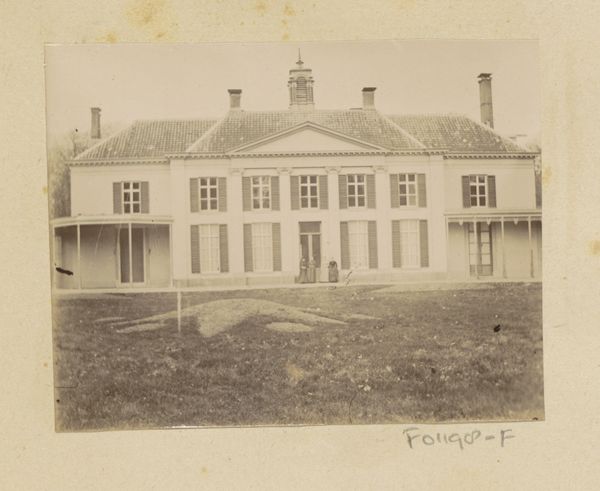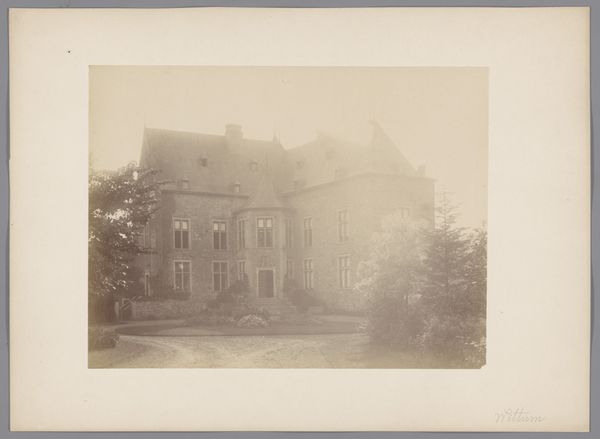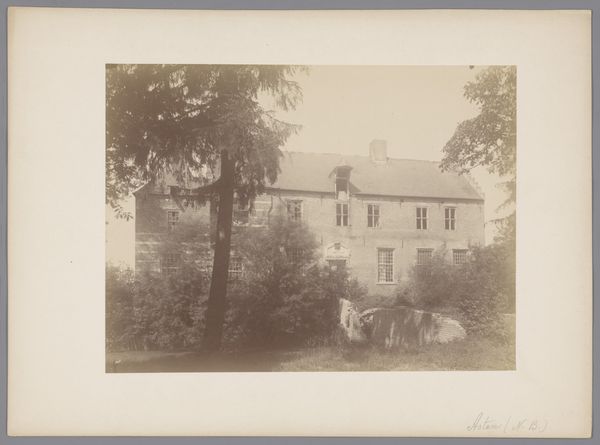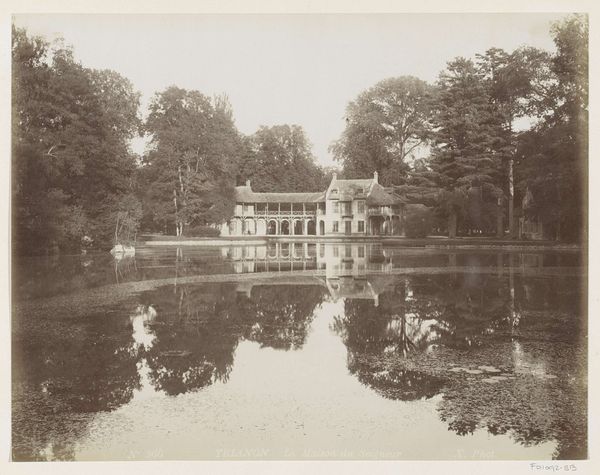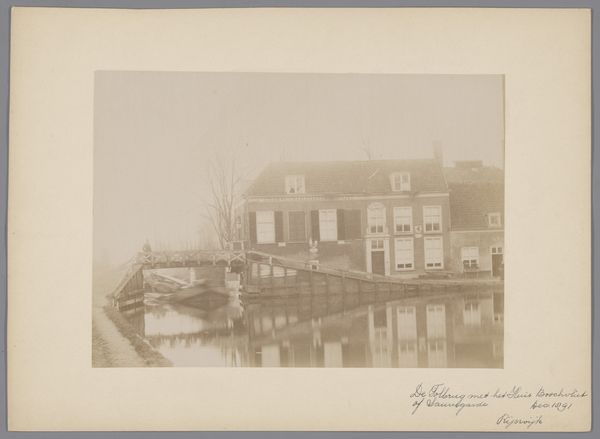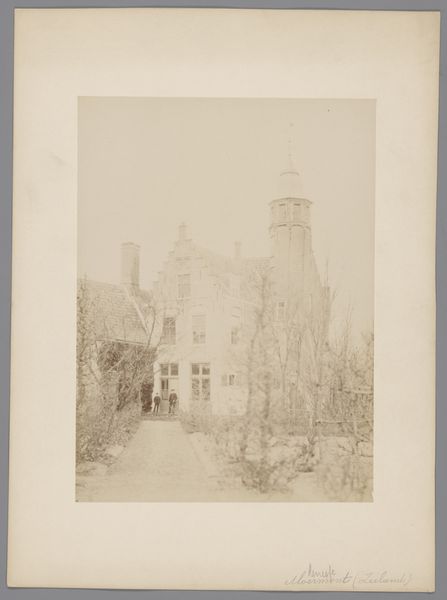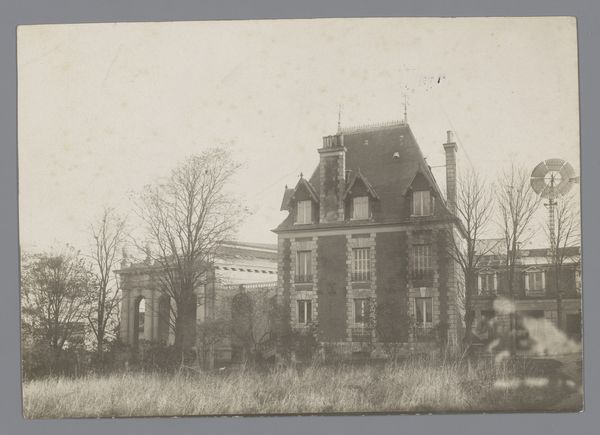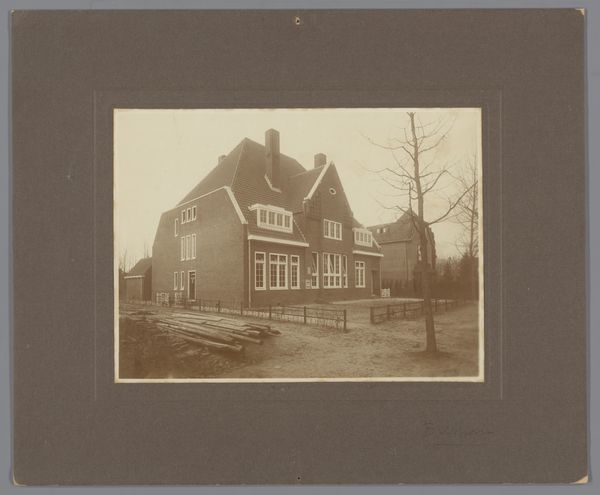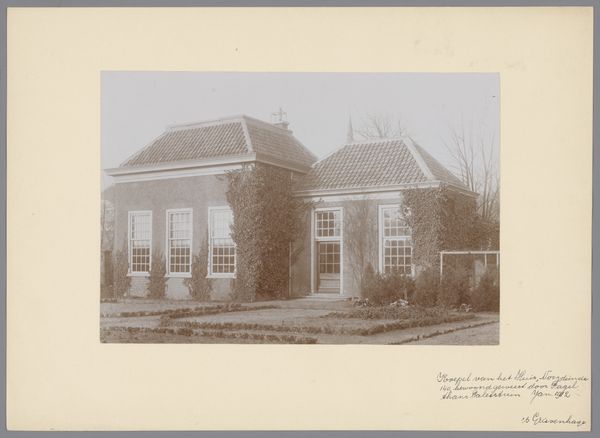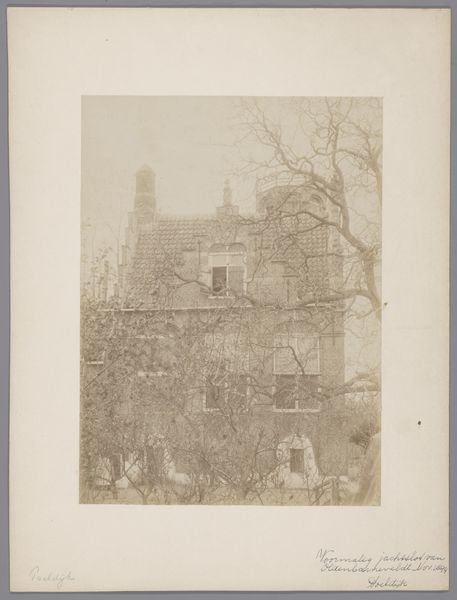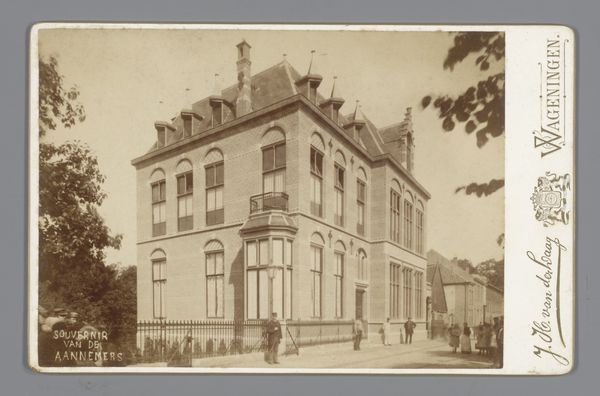
print, photography
# print
#
landscape
#
photography
#
cityscape
Dimensions: height 97 mm, width 75 mm
Copyright: Rijks Museum: Open Domain
Curator: Looking at this print, made sometime between 1889 and 1893, I am struck by the subdued atmosphere. Editor: It has a strange, melancholic feel, doesn't it? Before we dive into its context, could you just quickly describe what exactly we're looking at? Curator: Of course. This is "Gezicht op Groot Warnsborn nabij Arnhem", a photograph, a print actually, by Johanna Margaretha Piek. It presents the estate of Groot Warnsborn near Arnhem, capturing a grand building in a state of apparent transition. There is exposed earth in the foreground, suggestive of building works or landscaping efforts perhaps, which contributes to the somewhat haunting mood. Editor: Interesting you point out the exposed earth, which immediately draws attention to the raw materials employed both for this landscaping project, and even the mansion's structure. What statements about materiality might the artist have been trying to emphasize with this piece, consciously or unconsciously? And could it be connected to the rise of urbanization? Curator: Precisely! Piek, while working with the relatively new medium of photography, is documenting a transformation. It is not just the building’s physical modification that grabs us, but also the relationship between the built environment and the landscape itself. You see, during this period in the Netherlands, there was a keen interest in recording both progress and its effects on the land. And such works were almost like status statements on this country estate. Editor: This prompts one to wonder about the societal and political reasons. How did that time shape these landscape images' popularity and their interpretation, considering, of course, who owned these properties? Curator: This photograph could also be analyzed from the context of the late 19th-century Dutch elite, with estates such as this one becoming visible symbols of their economic success. Such estates visually communicated social authority and wealth. What’s particularly noteworthy here is the blending of this constructed social and economic power structure. It's really quite remarkable. Editor: Definitely, Johanna Margaretha Piek really captured more than a physical location. She preserved an era and questions what defines it to this day. Thanks so much. Curator: Indeed, Piek’s print offers an intriguing glimpse into that dynamic, and is a reminder of how the environment reflects power. It was my pleasure.
Comments
No comments
Be the first to comment and join the conversation on the ultimate creative platform.
